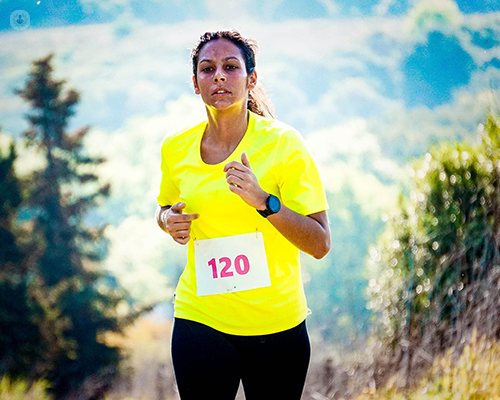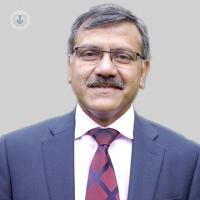Achilles tendinopathy and running
Escrito por:Achilles tendinopathy is one of the common problems afflicting runners of today. We’ve asked specialist orthopaedic surgeon Mr Abhijit Guha to explain what the condition feels like and just how exactly it is caused.

Why does Achilles tendinopathy affect runners in particular?
It can affect any sportsman but it is especially common in people who run on hard surfaces. Any change in the intensity type or even the frequency of exercise can often incite the onset of Achilles tendinopathy.
What does Achilles tendinopathy feel like?
Achilles tendinopathy usually presents as pain and swelling over the back of the heel. This is the common place where people develop pain and with time this swelling tends to enlarge in size. Sometimes the pain can be right at the heel bone, which is called insertional tendinopathy as opposed to the non-insertional tendinopathy, which occurs about 4 cm from the distal insertion of the Achilles tendon into the bone. These two are slightly different entities and the treatment tends to be fairly similar.
What is the difference between tendinopathy, tendonitis and tendonosis?
Over the years there have been various terms regarding Achilles pathology, which has led to a lot of confusion. We hear the terms Achilles tendinitis, tendinosis and also more commonly these days, tendinopathy.
It is important to realise that tendinitis is a term that suggests inflammation in the tendon and, only in certain cases, does the tendon actually get inflamed. More commonly it is a degenerative phenomenon and biopsies of the tendon have revealed a rather unusual lack of inflammatory cells. A consensus of opinion has established a common terminology for Achilles problems these days and that is tendinopathy which encompasses all degenerative non-inflammatory painful swollen conditions of the distal Achilles tendon.
What causes Achilles tendinopathy?
Achilles tendinopathy is a combination of biochemical mechanical and neural factors, and various studies have shown that not one individual factor is responsible for tendinopathy in itself and it is a combination of all three.
A number of different variables have been implicated, including:
- Sex - men are predominantly affected
- Age - beyond the age of 30
- Minor modifications and training footwear
- Excessive pronation of the forefoot
- The tightness of the calf muscle (gastroc-soleus).
Achilles tendinopathy is almost a repetitive stress phenomenon. When the reparative potential of the tendon does not match the degeneration this results in chronic disorganisation of the tendon itself.
Various studies have shown that the matrix is altered, the collagen fibrils become disorganised and the structure of the tendon itself changes. Very often there are myxoid or lipoid changes within the tendon suggesting tendinopathy.
Do not hesitate to book an appointment with Mr Guha if you're concerned about Achilles tendon.


